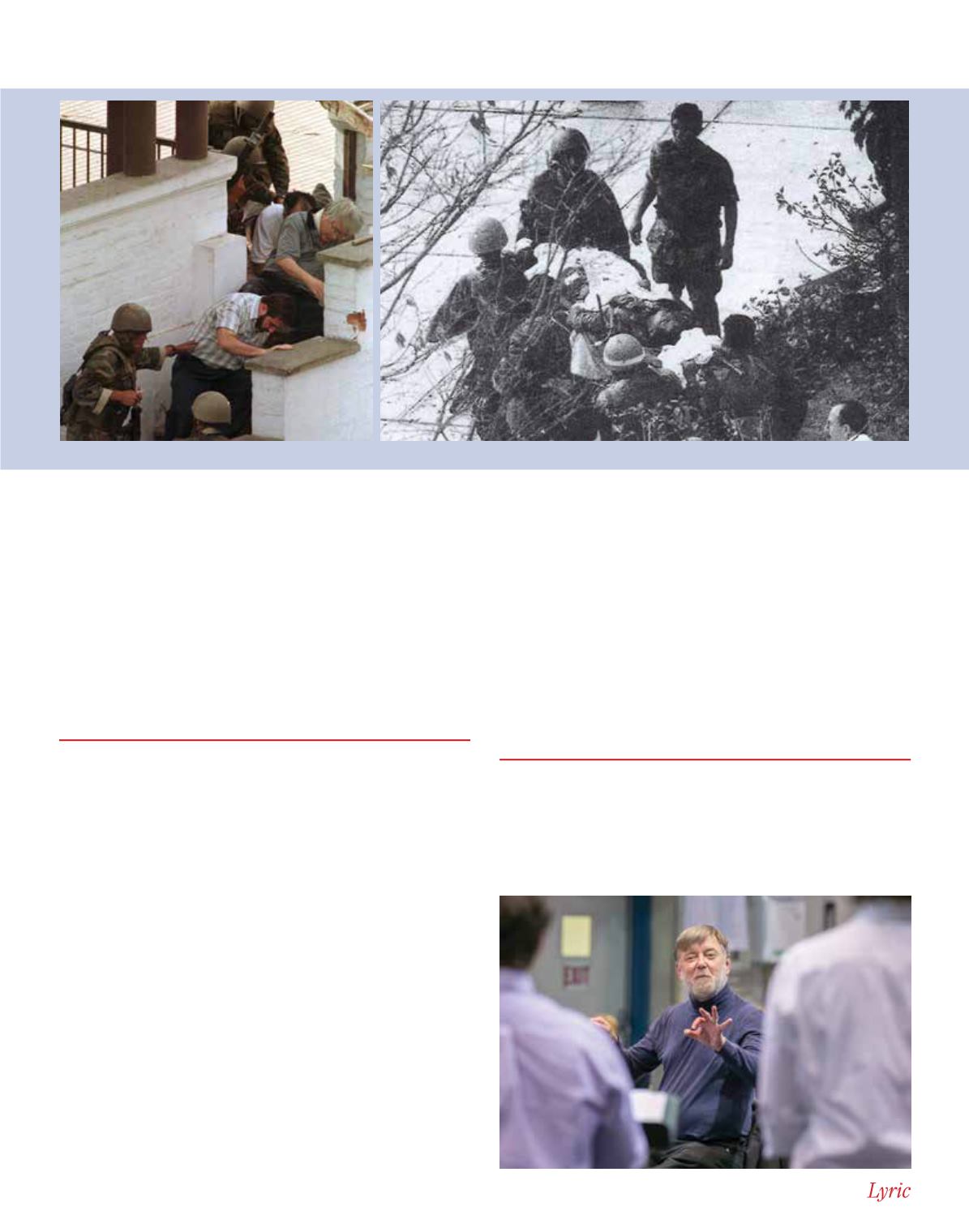

L Y R I C O P E R A O F C H I C A G O
32
|
December 7, 2015 - January 17, 2016
Can you give an example of the opera’s stylistic variety?
We have people coming from the Peruvian jungle, and you want
to bring a bit of that sound world into the music. You have a
soprano who’s influenced by traditional operatic repertoire, so
you want to quote some of the staple arias. We quote two of
them, but we transform them a lot. The possibility of going back
and forth stylistically has been fun. In certain especially strong
moments dramatically – when the terrorists come in, and when
the liberation happens in the end – you don’t want much text or
vocalism; instead, you want those moments to be delivered by
the orchestra.
NILO CRUZ,
librettist
How did the process of creating the piece begin?
When I met with Jimmy
,
our conversation began with ques-
tions like, “What do we hear? Are we going to use arias? What
is the music of the explosion when the terrorists come into the
embassy?” This evokes images, words, lyrics.
What is really good with
Bel Canto
is that there are exist-
ing words and I’m not creating from scratch. This is a piece that
actually exists. But we’re also exploring: I got three books from
Jimmy in Spanish that were based on the actual event as a way of
exploring that world that may bring more colors and possibilities
of different sounds and music and aromas.
What is
Bel Canto
about? What appeals to you about this story?
It’s about how music is able to bring together people who would
not actually coexist. I’m referring to the most extreme groups of
people: terrorists and hostages in a moment that is elevated to
great heights through music as they are caught in a situation from
which there is no exit. I think this piece is about the transforma-
tive power of art.
Something that lures me to this material is that at the center
of the book there are a couple of love stories. Whenever there’s
love, there’s the possibility to sing and to create soaring music.
And the clash of people from two different social strata – the
conflict – offers great dramatic possibilities.
How did you respond to the challenge of adapting Ann Patchett’s
words to the stage?
From the moment they asked me to do this project, I felt a real
affinity for Ann Patchett’s language. There’s humor in this mate-
rial, there’s lyricism and an enormous amount of beauty. She’s
not afraid to be emotional, and I’m not afraid to be emotional
at all! My writing is warm and poignant. I just connect with this
kind of material, and I really want to honor it.
SIR ANDREW DAVIS,
conductor and Lyric music director
How did your collaboration with Renée Fleming work?
Renée did an enormous amount of research into the works of
various composers. She listened to so much music, and she passed
on to me what she thought was worth hearing. We agreed that
Jimmy López was the right choice.
THOMSON REUTERS
THOMSON REUTERS
Lima, 1997 – (left) commandos assist hostages down the stairs during the rescue; (right) commandos carry a wounded comrade during the rescue operation.
Sir Andrew Davis
in the workshop
with the Ryan Opera
Center, July 2014.
TODD ROSENBERG
















